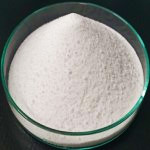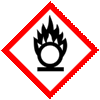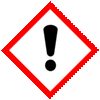 |
King of Chemicals Manufacturers |
Specifications, Properties, Uses, SDS of Potassium Iodate BP Ph Eur Analytical Reagent FCC Food Grade Manufacturer Supplier Exporter Wholesale & Small Packs, CAS Number 7758-05-6. |
|
| King of Chemicals has several associated companies having accreditations like cGMP, GLP - FDA Approved Good Manufacturing Practice and Good Laboratory Practice of WHO standard, ISO-9001, ISO-14001, ISO/IEC 17025, ISO ISO-45000, HACCP, FSSC 220000, FSSAI, "REACH" Registered, Kosher & Halal Certified. e-CTD and DMF support can be made available if needed. We offer USP NF BP Ph Eur EP IP JP Analytical Reagent FCC Food Grade Chemicals & Nutraceuticals. | |
        |
|
Muby Chem Pvt. Ltd. is a several decades old group of companies, engaged in manufacturing, supplying, distributing, wholesale supplies of Potassium Iodate for actual users, including retail or small pack supplies for research and development work.
We supply fine and speciality chemicals, pharmaceutical excipients, mineral fortifiers in chemically pure, analytical reagent grade, IP BP USP Ph Eur EP JP and other pharmaceutical grade monograph including FCC Food grade chemicals and Nutraceuticals at best prices. We and/or our associated units have all the facilities to supply as per cGMP standard observing good manufacturing practice and good laboratory practice. We can assure low microbial count and also offer a test certificate for the same. We maintain warehouses across USA, India, and UAE. Our group exports to USA, Canada, Mexico, Argentina, Brazil, Chile, Korea, Malaysia, Thailand, Indonesia, Europe, and several other parts of the world. We supply in wholesale container loads to small pack of few grams. Solid products may be specified for it size and shape as desired by the buyer.









Potassium Iodate CAS Number 7758-05-6
For Properties Specifications Uses of Potassium Iodate Click Properties, Specifications, Uses, Price, Process of Potassium Iodate Manufacturer.
For For SDS MSDS Sheet of Potassium Iodate Click SDS Safety Data Sheet MSDS Sheet of Potassium Iodate Manufacturer.
The Properties, Specifications, Monograph and Uses of Potassium Iodate:
7758-05-6, EINECS EC Number 231-831-9, HS Code 28276010 or 28291990; Molecular Weight 214, Molecular Formula: KIO3
Potassium iodate (KIO3) is an ionic chemical compound consisting of K+ ions and IO3- ions in a 1:1 ratio. Potassium iodate is sometimes used for iodination of table salt to prevent iodine deficiency. Potassium iodate is used as a source for dietary iodine. It is also an ingredient in some baby formula milk.
Potassium Iodate BP Ph Eur Grade Specifications:
KIO3 --- 214.0 --- CAS 7758-05-6
Action and use: Iodine supplement for emergency use.
DEFINITION
Potassium Iodate contains not less than 99.0% and not more than 101.0% of KIO3, calculated with reference to the dried substance.
CHARACTERISTICS
A white crystalline powder.
Slowly soluble in water; insoluble in ethanol (96%).
Dissolve 10 g of the substance being examined in sufficient water to produce 200 mL (solution S1).
Add 25 mL of hydrochloric acid to 6 g of the substance being examined, evaporate to dryness and repeat. Heat until iodine is removed. Dissolve the residue in 2.5 mL of a 25% v/v solution of hydrochloric acid and dilute to 50 mL with water (solution S2).
IDENTIFICATION
A. 1 mL of solution S1 yields reaction B characteristic of potassium salts.
B. Dissolve 0.1 g in 5 mL of water. Add 1 mL of silver nitrate solution followed by 1 mL of sulfur dioxide solution. A yellow precipitate is produced immediately.
TESTS
Acidity or alkalinity: pH of solution S1, 5.0 to 8.0
Clarity and colour of solution: Solution S1 is clear and colourless.
Chloride, chlorate, bromide, bromate: Dilute 5 mL of solution S1 to 15 mL with water, add 20 mL of sulfur dioxide solution and heat on a water bath for 30 minutes. Heat to boiling, cool, add 10 mL of 18M ammonia and 20 mL of silver nitrate solution and dilute to 70 mL with water. Filter, transfer 35 mL of the filtrate to a Nessler cylinder and acidify with 6 mL of nitric acid. After 5 minutes, any opalescence, when viewed vertically, is not greater than that produced by treating 5 mL of a 0.00165% w/v solution of sodium chloride at the same time and in the same manner (0.02%).
Iodide: Add 1 mL of 1.8M sulfuric acid to 25 mL of solution S1 and shake with 1 mL of chloroform. Any violet colour produced is not more intense than that of a solution prepared at the same time and in the same manner but using 5 mL of solution S1 and 2 mL of iodide standard solution (10 ppm I) (20 ;ppm).
Sulfate: Add 1 mL of a 25% w/v solution of barium chloride to 1.5 mL of sulfate standard solution (10 ppm SO4), shake and allow to stand for 1 minute. Add 12.5 mL of solution S2 diluted to 15 mL with distilled water and 0.5 mL of 5M acetic acid and allow to stand for 5 minutes. Any opalescence produced is not more intense than that of a standard prepared in the same manner but using 7.5 mL of sulfate standard solution (10 ppm SO4) diluted to 15 mL with distilled water in place of the solution being examined (50 ppm).
Loss on drying: When dried at 130C for 1 hour, loses not more than 0.5% of its weight. Use 1 g.
To 1.5 g add sufficient water to produce 250 mL. To 25 ;mL of the resulting solution in an iodine flask add 3 g of potassium iodide, 100 mL of water and 10 mL of hydrochloric acid. Close the flask and stand in the dark for 5 minutes. Titrate the solution with 0.1M sodium thiosulfate to a light straw colour and then complete the titration to a colourless end point using starch mucilage as indicator. Each mL of 0.1M sodium thiosulfate ;is equivalent to 3.567 mg of KIO3.
Potassium Iodate FCC Food Grade
KIO3 -- Formula wt 214.00
CAS: [7758-05-6]
DESCRIPTION
Potassium Iodate occurs as a white, crystalline powder. One gram dissolves in about 15 mL of water. It is insoluble in alcohol. The pH of a 1:20 aqueous solution is between 5 and 8.
REQUIREMENTS
Identification: Add 1 drop of starch TS and a few drops of 20% hypophosphorous acid to 1 mL of a 1:10 aqueous solution. A transient blue color appears.
Assay: Not less than 99.0% and not more than 101.0% of KIO3 after drying.
Chlorate: Passes test (limit about 0.01%).
Iodide: Passes test (limit about 0.002%).
Lead: Not more than 4 mg/kg.
Loss on Drying: Not more than 0.5%.
Potassium Iodate Analytical Reagent Grade Chemical
KIO3 -- Formula Wt 214.00 -- CAS Number 7758-05-6
REQUIREMENTS
Assay: 99.4-100.4% KIO3
pH of a 5% solution: 5.0-8.0 at 25C
MAXIMUM ALLOWABLE
Insoluble matter: 0.005%
Chloride and bromide (as Cl): 0.01%
Iodide (I): 0.001%
Nitrogen compounds (as N): 0.005%
Sulfate (SO4): 0.005%
Heavy metals (as Pb): 5 ppm
Iron (Fe): 0.001%
Sodium (Na): 0.005%
The MSDS-SDS Hazard Statement of Potassium Iodate:
Potassium Iodate SDS, Safety Data Sheet
MSDS, Material safety Data Sheet 04-Aug-21
1. Product Identification
Product Name & Other Names: Potassium iodate, Iodic acid potassium salt.
CAS No.: 7758-05-6
EINECS: EC Number: 231-831-9
Molecular Weight: 214
Chemical Formula: KIO3
Relevant uses and uses advised against (if any): Industrial Manufacturing.
Supplier: As per letterhead.
2. Hazards Identification
GHS, Globally Harmonized System Classification in accordance with 29 CFR 1910
Classification according to Regulation (EC) No 1272/2008
Oxidizing Solids Category 3, H272
Skin corrosion/irritation Category 2, H315
Serious eye damage/eye irritation Category 2A, H319
Specific target organ toxicity, single exposure; Respiratory tract irritation Category 3, H335
Labeling according to GHS & Regulation (EC) No 1272/2008
GHS Label Elements  Oxidizing Solid |
GHS Label Elements |
Signal Word: Danger
Hazard Statements:
H272 - May intensify fire; oxidizer
H315 - Causes skin irritation
H319 - Causes serious eye irritation
H335 - May cause respiratory irritation
Precautionary Statements - Prevention
P210: Keep away from heat/sparks/open flames/hot surfaces. - No smoking.
P220: Keep/Store away from clothing/combustible materials
P221: Take any precaution to avoid mixing with combustibles
P264: Wash face, hands and any exposed skin thoroughly after handling
P280: Wear protective gloves/ protective clothing/ eye protection/ face protection
Precautionary Statements - Response
P301+P312: IF SWALLOWED: Call a POISON CENTER or doctor if you feel unwell.
P302+P352: IF ON SKIN: Wash with plenty of water.
P305+P351+P338: IF IN EYES: Rinse cautiously with water for several minutes. Remove contact lenses, if present and easy to do. Continue rinsing.
P333+P313: If skin irritation or rash occurs: Get medical advice/ attention.
P337 + P313: If eye irritation persists: Get medical advice/ attention
P362: Take off contaminated clothing and wash before reuse.
P370+P378: In case of fire: Use water for extinction
Precautionary Statements - Storage
P501: Dispose of contents/container in accordance with local, regional, national, international regulations.
3. Composition/Information on Ingredients
Product Name & Other Names: Potassium iodate, Iodic acid potassium salt.
CAS No.: 7758-05-6
EINECS: EC Number: 231-831-9
4. First Aid Measures
Always seek medical attention after first aid measures are provided.
Inhalation: Remove to fresh air. If not breathing, give artificial respiration. If breathing is difficult, give oxygen. Get medical attention.
Ingestion: Never give anything by mouth to an unconscious person. Get medical attention.
Skin Contact: Wipe off excess material from skin then immediately flush skin with plenty of water for at least 15 minutes. Remove contaminated clothing and shoes. Get medical attention. Wash clothing before reuse. Thoroughly clean shoes before reuse.
Eye Contact: Immediately flush eyes with plenty of water for at least 15 minutes, lifting lower and upper eyelids occasionally. Get medical attention immediately.
Note to Physician: Symptomatic and supportive treatment is recommended.
5. Fire Fighting Measures
Flammability of the Product: Non-flammable but it is an oxidizer.
Products of Combustion: It emits toxic oxides of Iodine, Potassium Oxide, Hydrogen Iodide, and fumes when heated to decomposition.
Fire: Potassium Iodate is supporting fire as an oxidizer.
Explosion: Contact with oxidizable substances may cause explosion.
Fire Extinguishing Media: Water spray, Foam. Use means suitable for extinguishing surrounding fire. Avoid carbon dioxide and gas filled extinguisher. Water should be preferred.
Extinguishing Media Not recommended: None specified.
Special Information: In the event of a fire, wear full protective clothing and NIOSH-approved self-contained breathing apparatus with full face piece operated in the pressure demand or other positive pressure mode. At high temperatures under fire conditions, it may produce toxic or irritating fumes. Fire-extinguishing work is done from the windward and the suitable fire-extinguishing method according to the surrounding situation is used. Uninvolved persons should evacuate to a safe place.
6. Accidental Release Measures
Personal precautions, protective equipment, and emergency procedures: Avoid breathing dust/fumes/gas/mist/vapors/spray. Use individual protective equipment (waterproof boots, suitable protective clothing, safety glasses, etc.). Restrict unprotected personnel from the area. Prevent any contact with hot surfaces. Do not approach facing the wind. Do not touch the spilled material.
Environmental precautions: Do not let the product enter drains, soil, or water sources.
Methods and materials used for containment cleanup procedures and Storage: Eliminate all sources of ignition. Do not let the product enter drains. Use a shovel to put the material into a convenient waste disposal container. Finish cleaning by spreading water on the contaminated surface and allow evacuating through the sanitary system if local laws permit.
7. Handling and Storage
Precautions for safe handling: Apply according to good manufacturing and industrial hygiene practices. Ensure proper ventilation. In case of insufficient ventilation, wear suitable respiratory equipment. Wash thoroughly after handling. Do not drink, eat, or smoke while handling. Avoid contact with skin, eyes, and clothing. Minimize dust generation. Avoid breathing dust/fumes/gas/mist/vapors/spray. Avoid contact with eyes, skin, and clothing. Keep container tightly closed. Avoid ingestion and inhalation. Use individual protective equipment (waterproof boots, suitable protective clothing, safety glasses, etc.). Prevent any contact with hot surfaces.
Conditions for safe storage, including any incompatibilities: Store in cool <32C, dry and ventilated area away from heat sources and protected from sunlight in tightly closed original container. Keep air contact to a minimum. Do not leave the material container open. Store protected from heat, sparks and ignition sources and incompatible materials. Avoid contact with skin and eyes. Avoid inhalation of dust/mist/vapor. Do not store with incompatible materials like organic substances, strong reducing agents, acids, powdered metals, strong bases, alcohols, phosphorous, anhydrides, halogens, acids metal powders and heat, combustible substances.
8. Exposure Controls/Personal Protection
Airborne Exposure Limits: None established. Limit.
Ventilation System: A system of local and/or general exhaust is recommended to keep employee exposures as low as possible. Local exhaust ventilation is generally preferred because it can control the emissions of the contaminant at its source, preventing dispersion of it into the general work area.
Personal Respirators (NIOSH Approved): For conditions of use where exposure to dust or mist is apparent and engineering controls are not feasible, a particulate respirator may be worn. For emergencies or instances where the exposure levels are not known, use a full-face positive-pressure, air-supplied respirator.
Skin Protection: Wear protective gloves and clean body-covering clothing.
Eye Protection: Use chemical safety goggles and/or full-face shield where dusting or splashing of solutions is possible. Maintain eye wash fountain and quick-drench facilities in work area.
Other Control Measures: Maintain good housekeeping in work area. Dust deposits on floors and other surfaces may pick up moisture and cause the surfaces to become slippery and present safety hazards. Handle in accordance with good industrial hygiene and safety practice. Wash hands after handling.
9. Physical and Chemical Properties
Appearance: White crystals or powder.
Odor: None.
Odor threshold: Not available.
pH: near 6 at 5% solution at 25 C (77F)
Relative density: 3.9
Melting Point: 560C
Initial boiling point and boiling range: Not available.
Flash point: Not available.
Auto-ignition temperature: Not available.
Decomposition temperature: Not available.
Upper/lower flammability or explosive limits: Not available.
Vapor pressure: Not available.
Vapor density: Not available.
Evaporation rate: Not available.
Flammability (solid, gas): Not available.
Partition coefficient: n-octanol/water: Not available.
Solubility: Soluble in water.
Viscosity: Not available.
Molecular Weight: 214
Molecular Formula: KIO3
10. Stability and Reactivity
Stability: Stable under ordinary conditions of use and storage. It becomes unstable by heat and moisture.
Hazardous Decomposition Products: Oxygen, oxides of Potassium, Iodine oxides, Hydrogen Iodide, and fumes.
Hazardous Polymerization: Will not occur.
Incompatibilities: Organic substances, Strong reducing agents, Acids, Powdered metals, Strong bases, Alcohols, phosphorous, Anhydrides, Halogens, Acids Metal powders and Reducing agents. Heat.
Conditions to Avoid: Moisture, Heat, Incompatibles.
11. Toxicological Information
Toxicity to Animals:
Oral LD50: 531 mg/kg (Mouse)
ORAL (LD50): 400 mg/kg [guinea pig].
LD50 Intraperitoneal - mouse - 136 mg/kg
Carcinogenicity: No component of this product present at levels greater than or equal to 0.1% is identified as possible or confirmed human carcinogen by IARC, ACGIH, OSHA and NTP.
Mutagenic Effects: Not available.
Developmental Toxicity: Not available.
Reproductive Effects: No information available.
12. Ecological Information
Toxicity to fish: No information available.
Persistence and Degradability: Unlikely to persist due to water solubility.
Mobility: Likely to be mobile due to water solubility.
Bioaccumulation/ Accumulation: No information available.
Results of PBT and vPvB assessment: No data available for assessment.
This substance/mixture contains no components considered to be either persistent, bioaccumulative and toxic (PBT), or very persistent and very bioaccumulative (vPvB) at levels of 0.1% or higher.
13. Disposal Considerations
Whatever cannot be saved for recovery or recycling should be managed in an appropriate and approved waste disposal facility. Processing use or contamination of this product may change the waste management options. State and local disposal regulations may differ from federal disposal regulations. Dispose of container and unused contents in accordance with federal, state, and local requirements. Small amounts of this material may be suitable for sanitary sewer or trash disposal.
14. Transport Information
Land Transport DOT USA, TDG Canada & ADR/RID Europe
Shipping Name: Potassium Iodate
Hazard Class: 5.1
UN Number: UN1479
Hazard Label: Oxidizer
Packing Group: II
Sea Transport IMDG/IMO
Shipping Name: Potassium Iodate
Hazard Class: 5.1
UN Number: UN3377
Hazard Label: Oxidizing Agent
Marine pollutant: No
Packing Group: III
Air Transport IATA/ICAO
Shipping Name: Potassium Iodate
Hazard Class: 5.1
UN Number: UN3377
Hazard Label: Oxidizer
Packing Group: III
15. Regulatory Information
USA:
SARA 311/312 Hazards: Reactivity Hazard, Acute Health Hazard, Chronic Health Hazard
California Prop. 65 Components: This product does not contain any chemicals known to State of California to cause cancer, birth defects, or any other reproductive harm.
16. Other Information
DISCLAIMER: The information and recommendations set forth herein are presented in good faith and believed correct as of the date hereof. It is compiled from various sources, and it is not necessarily all inclusive nor fully adequate in every circumstance. In addition, these suggestions should not be confused with nor followed in violation of applicable laws, regulations, rules, or insurance requirements applicable. This SDS MSDS sheet is intended only as a guide to the appropriate precautionary handling of the material by a professionally trained person using this product. Individuals receiving the information must exercise their independent judgment in determining its appropriateness for a particular purpose. This shall not constitute a guarantee for any specific product features and shall not establish a legally valid contractual relationship. In no case shall our company be liable to loss or damages by the product user.
Potassium Iodate Manufacturers, Suppliers, Exporters, Wholesalers:
King of Chemicals manufacturers

Plot No. 2900/46&47 + 2900/163to167, GIDC, Ankleshwar, Dist. Bharuch, India
India, USA, UAE
TEL: (Office) 91-22-23774610, 91-22-23723564
e-mail: info@kingofchemicals.com
Copyright and Usual Disclaimer is Applicable --- April 5, 2025
If I give you “My Word” Nobody can undo it.
If I sign an “Agreement” my Lawyer will undo it
Our products are for industrial and laboratory use only. The user must test the material before use. We are not dispensing chemists or druggist and do not offer over the counter type (OTC) products for medical use by individuals.
We and our associates manufacture pure chemicals surpassing Monograph Specifications of Analytical Reagent Standards, British & European Pharmacopoeia BP Ph Eur EP Standard, US Pharmacopoeia USP NF Standard, Indian Pharmacopoeia IP Standard, Japan Pharmacopoeia JP Standard, FCC Food Grade Standard. |
|
